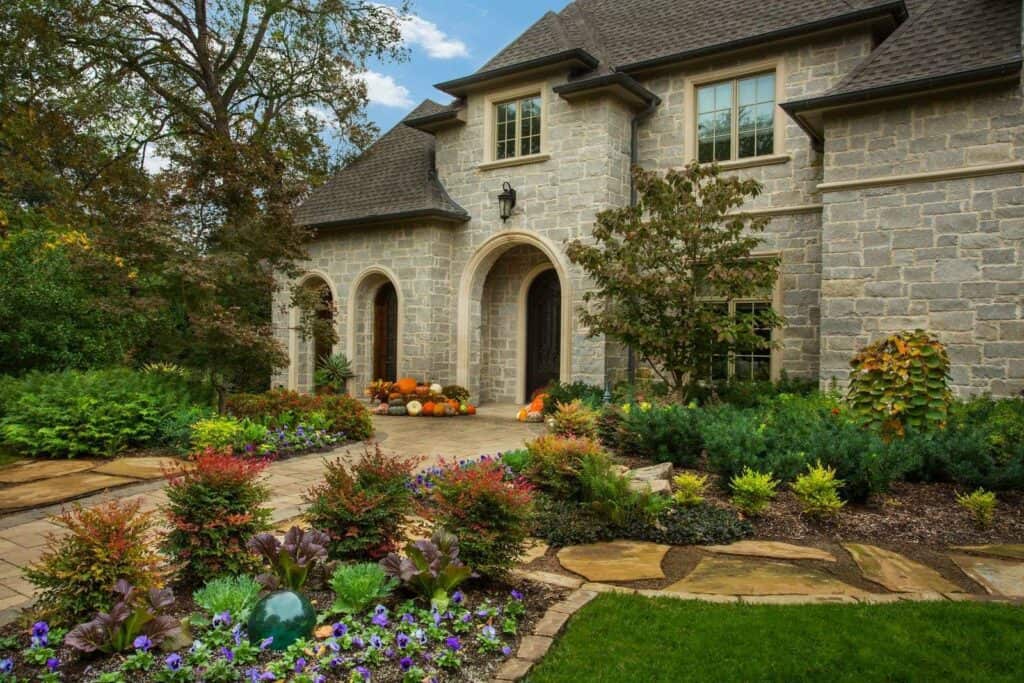Not known Facts About Landscape Design
Wiki Article
The 5-Minute Rule for Landscape Design
Table of ContentsAbout Landscape DesignThe Best Strategy To Use For Landscape Design6 Simple Techniques For Landscape DesignThe Best Guide To Landscape Design
Official style theme. Credit Scores: Gail Hansen, UF/IFAS The yard is an extension of the home where a range of tasks take place. A yard can usually be split into three locations: public (the front lawn), private (the garden), and solution (generally the side lawn). The place of task locations depends largely on the kind of location, the dimension of space required, the kind of task, and the preferred distance to various other tasks and frameworks (Landscape Design).
The outdoors wall of the house frequently acts as the very first wall or starting point of an outside space. Incompatible uses need to be separated, and relevant tasks, such as food preparation and dining, need to be assembled to make the backyard a lot more reliable and enjoyable. When making use of hardscape to produce areas, make use of construction product similar to that utilized in your home for connection from the home right into the garden.
Connected spaces. Credit Scores: Gail Hansen, UF/IFAS Making use of comparable hardscape attributes and repeating plants pulls the eye around the yard.
This provides a sense of enigma that advertises exploration and discovery of the landscape. From a design perspective, plant products have 3 significant functions in the landscape: aesthetic, architectural and utilitarian. Cosmetically, plants create a visually positive environment and structurally plants arrange and define areas. Plants are practical because they can transform the atmosphere for the convenience of the user by modifying light, temperature and moisture.
The Ultimate Guide To Landscape Design
For psychological convenience plants are made use of as physical or suggested barriers for personal privacy and safety. Physical obstacles obstruct both the view and accessibility to an area and consist of fences, walls and plant hedges. Landscape Design. Implied obstacles, normally reduced growing plants, block access but not the view (Number 9). Various other functions of plants include cleaning the air, stopping erosion and soil loss, maintaining moisture in the soil, and returning raw material to the dirt.Physical and indicated barriers. Credit Scores: Gail Hansen, UF/IFAS For these reasons, the kinds of plants to be used (such as trees, hedges, or groundcovers) ought to be picked in the very early phases of planning. Plant types are chosen for their useful capabilities to ensure that their future function and needed space can be considered at the exact same time.
The above airplane, the vertical airplane and the ground airplane need to all be considered to develop enclosure. As soon as the shape of a plant bed has actually been developed, the plants ought to be massed (organized) and split to attain aesthetic unity and the wanted amount of enclosure. The read this article dimension of a plant mass will certainly depend on the overall dimension of important source the backyard, the size of the private plants in the mass, and the focus or impact desired from the plant product.
Each plant mass is in front of, behind, or next to, an additional mass. Credit Score: Gail Hansen, UF/IFAS Repeating plants within a mass and repeating masses with similar plants links the yard together. The individual plant characteristics should be thought about to effectively layer and mass plants.
The Buzz on Landscape Design
All plant compositions begin with the main framework plants, the large, mainly evergreen background plants-such as the trees and big shrubs. These plants separate or enframe spaces, manage the size of the space, and provide the starting point for selecting the proper features of the 2nd layer, midground plants, for massing and infill.
Vital points in the yard should be highlighted by the use unique plants, distinctive frameworks, or yard accessories. Noting limits or entries to spaces can be made with entrances, arbors, and actions, or through using one-of-a-kind and vivid plants. The form and/or design motif of the garden will certainly commonly help identify the essential points and how they should be highlighted.
Various other vital places in the lawn are focal factors, which is made use of to aesthetically organize a designed area. Various perspectives or point of views can expose various structures in the landscape that may need a variety of focal factors.
The 10-Minute Rule for Landscape Design
Plant forms. Credit History: Gail Hansen, UF/IFAS After kind, texture is the next my link leading function of a plant; rugged, tool and fine textures can be used for contrast and emphasis in the landscape.

The pleasurable scent of plants, the sound of wind in the trees, the noise and appearance of water, and the colors and textures of sculptures, pots and yard furniture all add to the experience of the garden. One information that is commonly forgotten is the effect of light on the appearances of the plants.
The entire yard adjustments in function and look over the training course of the day, and the course of a year, as the light and temperature level change from early morning to evening and season to period. Plant selection should take into consideration a plant's growth price, its fully grown size and form, and the maintenance it will require.
It is essential to know the ultimate fully grown size of plants so they can be positioned in the right place and spaced effectively when they are mounted. Giving plants area to grow is a difficulty due to the fact that the common fully grown size is commonly based upon optimal growing problems and the environmental conditions of a site might trigger a plant to expand bigger or stay smaller sized.
Report this wiki page